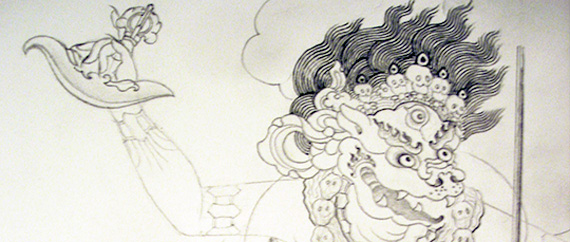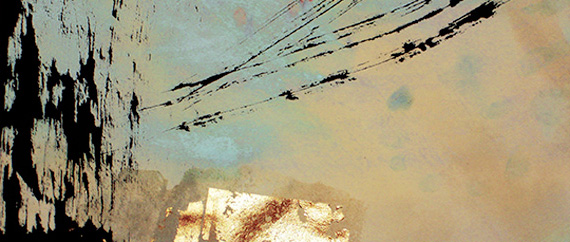About


Cynthia Moku paints in contemporary and traditional formats
As a contemporary artist with training in eastern and western painting traditions, Cynthia’s work responds to a global community. It is culturally diverse, multi-faceted and technologically advancing.
Cynthia’s contemporary ink-art paintings and outdoor environmental performances reflect her unique and singular training in Japanese calligraphy under two great Japanese Brush Masters of the 20th century, Eiichi Okamoto Sensei and Zen Roshi Kobun Chino Otogawa.
Since then, Cynthia has developed the ‘Indelible Presence Brush’ practices done within group meditation retreats. Stemming from these reflexive practices, ‘One Continuous Gesture’ has emerged as a public-performance group brush session with the intention of connecting wisdom traditions and communities through the art of brush practice.
Cynthia brings her contemporary artwork to the forefront through painting sequences such as; Flying White, Pilgrimage, Sky Dancers and Maitri Seed series.
In her eastern traditional works, Cynthia has directed large-scale projects associated with the Himalayan Buddhist tradition for more than fifty years. This includes designing and directing interior mural paintings for the three major public stupas in the United States all located along the Rocky Mountain range.
In the 1960’s as an art student in the Academies of San Francisco, Cynthia trained in western painting and drawing disciplines including: classic painting techniques, anatomy, graphic design and theory. During this cultural and spiritually stimulating time, classic eastern art forms captured her attention. The specific techniques and scope of philosophical understanding, held within these artistic traditions, provided an untapped medium through which she could articulate her work.
Pursuing this interest and continuing her training in meditation, she met the renowned meditation master and dharma teacher, Kyabje Kalu Rinpoche. Under his prompting and instruction, Cynthia began a life-long study and practice in meditation and the emblematic art of the illustrated dharma. Commissioned by both Tibetan and American spiritual teachers, her thangka paintings reside across the globe.
This includes the seminal painting of the Protector Chagdrukpa Mahakala, acquired by the Denver Art Museum and consecrated by His Holiness the XIV Dalai Lama. This piece has the distinction of being the first thangka in the Karma Ghadri style of Himalayan Buddhist scroll painting acquired by a major American art museum for its permanent collection, that states, ‘Country of Origin, the United States of America’.
Along with her artwork, as an educator, Cynthia has taught contemplative art disciplines and guided meditation sessions in the United States and Europe, including designing and implementing Naropa University’s Bachelor of Arts Degree in the Visual Arts.
Lately, Cynthia has been turning her attention towards immersive holographic wall art, by delving into the relationship between visual perception and direct experience. Examples of these new exploratory works are shown in her ‘Depth Perception Collection’.
Media
Buddhist Door Global
Vivid Realizations: A Journey Through Buddhist Art
The Middle Way Initiative
Mere Appearance, Prajnaparamita Illustrated
Shambhala Mountain
On-line interview
Shambhala Times
A four-part article
Artist Statement
I choose
visual
symbolic language
to express
my discoveries
my inquiries
my adherence
to wonderment
I find that colour, shape, texture, line — these animated tonal qualities of light — are latent composition rendered through years of training. Impervious to decay or the capricious migration of time, they are closer to reality than reality itself, and capable of expressing time-honored truths. Having trained in both contemporary western drawing & painting, and traditional eastern Buddhist art, my artwork is multidimensional and multicultural, with certain bodies of work intended for interactive group participation. At the confluence of these two streams I sit: exploring, redefining, and celebrating the shared edge between Buddhist philosophy & receptivity and current western thought & responsiveness.

